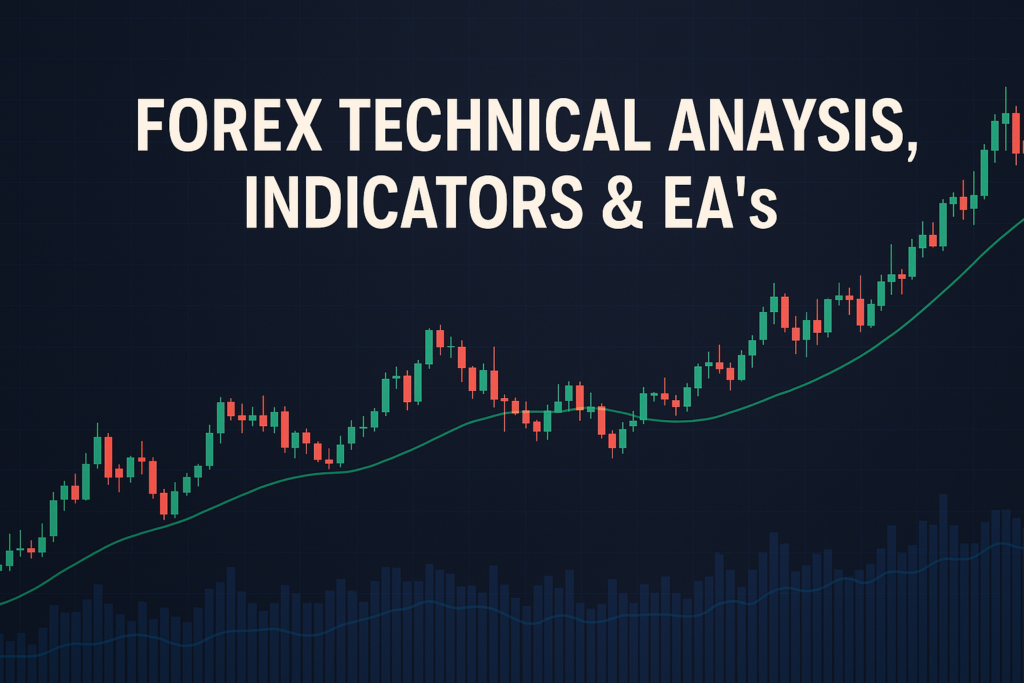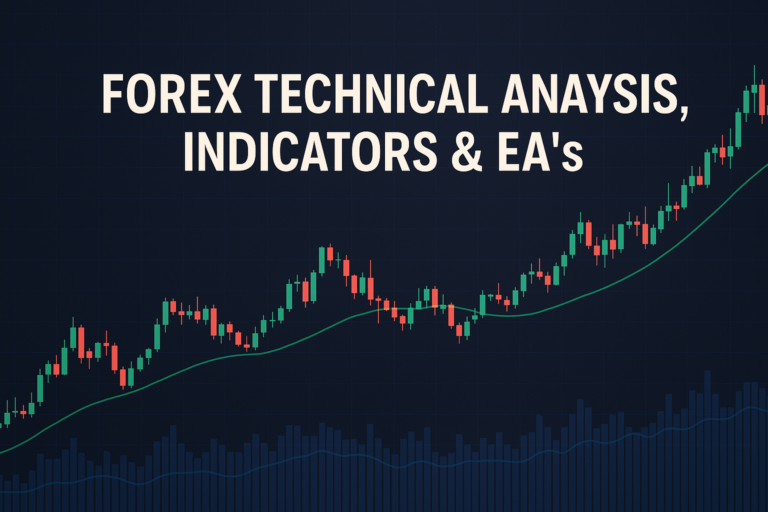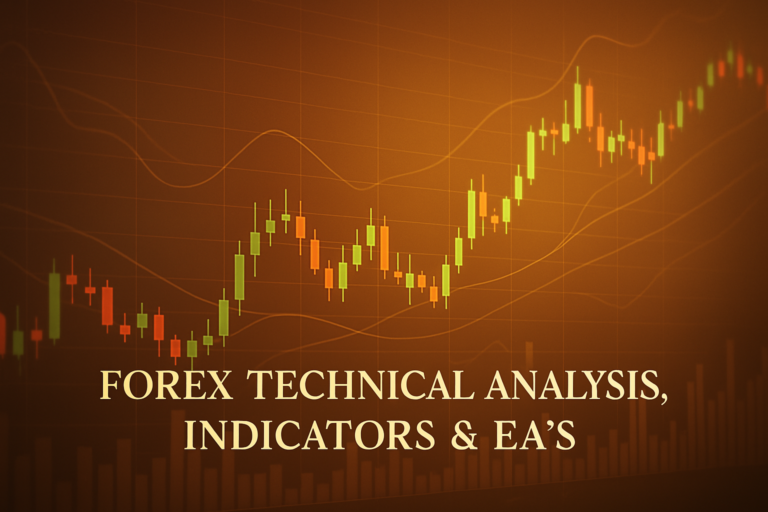
Discover the stochastic indicator formula, a powerful tool for Forex traders. Learn its advantages, strategies, and how to apply it effectively for success.
The stochastic indicator formula is a powerful tool in Forex trading, helping traders analyze price movements and identify potential buying or selling opportunities. By measuring momentum and comparing a security’s closing price to its price range over a specific period, this indicator reveals whether a currency pair is overbought or oversold. Understanding this concept is crucial for those looking to enhance their trading strategies.
However, many traders, both beginners and experienced professionals, often struggle to grasp the stochastic indicator formula fully. It can seem complex at first, with its various settings and interpretations. Without a clear understanding, traders may miss out on valuable insights and opportunities. Mastering the stochastic indicator formula can significantly improve a trader’s decision-making abilities and overall success.
This article will explore the stochastic indicator formula, its history, advantages, and disadvantages. We will also discuss how to apply it on MT4 and MT5, along with various trading strategies, and answer common questions.
For those interested in starting young, the world of Forex trading isn’t closed off. If you’re under 18, you can still explore your options in Forex trading. Check out our guide on forex trading under 18.
What is a stochastic indicator formula?
The stochastic indicator formula is a technical analysis tool that helps traders assess the momentum of a currency pair. In simpler terms, it compares the closing price of a currency pair to its price range over a specified period. Think of it like a thermometer measuring the temperature of the market. If the temperature is high, it suggests that the currency is overbought, while a low reading indicates it might be oversold.
Types of stochastic indicator formula
There are several types of stochastic indicators, including:
- Simple Stochastic: The basic version that gives you a straightforward signal.
- Exponential Stochastic: This version gives more weight to the most recent price movements.
- Weighted Stochastic: Similar to the exponential but uses a different method for weighing prices.
How stochastic indicator formula smooths out price action
The stochastic indicator formula helps to smooth out price action by filtering out noise. When prices are volatile, it can be challenging to make decisions based on price movements alone. The stochastic indicator provides a clearer picture by showing trends and potential reversal points, making it easier for traders to spot opportunities.
Common periods used and why
Traders often use specific periods for the stochastic indicator formula, commonly 14, 21, or 9 periods. A 14-period stochastic is popular because it balances sensitivity and reliability. Shorter periods can react quickly to price changes, while longer periods provide a broader view of the trend. Choosing the right period depends on your trading style and the market conditions.
The History of stochastic indicator formula: How It Became Popular
Origin of stochastic indicator formula
The stochastic indicator formula was developed by George C. Lane in the late 1950s. Lane created this tool to help traders understand market momentum and identify potential price reversals. His vision was to provide a simple yet effective method for assessing market conditions, and the stochastic indicator has since become a staple in the trading community.
When did traders start using it widely?
Traders began adopting the stochastic indicator formula in the 1980s as Forex trading became more accessible. With the rise of personal computers and trading platforms, traders could easily implement this tool in their strategies. It quickly gained popularity for its effectiveness in identifying overbought and oversold conditions.
Real-life stories
Many professional traders have credited the stochastic indicator formula for their successes. For instance, a trader named Sarah used it to identify a significant buying opportunity in the EUR/USD pair. By recognizing an oversold condition, she confidently entered the trade and profited as the market reversed. Her story is just one of many illustrating the power of the stochastic indicator formula in real-life trading scenarios.
Advantages and Disadvantages of stochastic indicator formula
Advantages:
- Helps identify trends easily: It can quickly show whether a currency pair is in an uptrend or downtrend.
- Useful for dynamic support and resistance: Traders can use stochastic levels to identify key price levels.
- Works well for crossover strategies: When the %K and %D lines cross, it can signal a good entry or exit point.
Disadvantages:
- lags behind price movements: Sometimes, the stochastic indicator formula reacts too slowly, leading to missed opportunities.
- Can give false signals in sideways markets: During consolidation phases, the indicator may produce misleading signals, causing confusion.
How to Apply stochastic indicator formula on MT4 & MT5
Step-by-step guide to adding stochastic indicator formula on charts
To add the stochastic indicator formula on MT4 or MT5, open your trading platform and follow these steps:
- Click on “Insert” in the top menu.
- Hover over “Indicators” and select “Oscillators.”
- Choose “Stochastic Oscillator” from the list.
- Click “OK” to apply it to your chart.
Customizing stochastic indicator formula settings
You can customize your stochastic indicator formula settings by clicking on the indicator in your chart. You can adjust the periods, colors, and types to suit your trading style. Experimenting with different settings can help you find what works best for you.
Saving templates for easy application
Once you’ve customized your stochastic indicator formula, you can save it as a template. Right-click on your chart, select “Template,” and then “Save Template.” This way, you can easily apply the same settings to other charts without starting from scratch.
5 to 7 Trading Strategies Using Only stochastic indicator formula
All Time Frame Strategy (M5 to D1)
This strategy works across all time frames. Traders look for overbought or oversold conditions on the stochastic indicator formula. If the %K line crosses above the %D line in the oversold zone, it’s a signal to buy. Conversely, if the %K crosses below the %D line in the overbought zone, it’s a signal to sell.
Trending Strategies
This strategy focuses on identifying trends. When the stochastic indicator shows a bullish crossover in an uptrend, it’s a good time to enter a buy trade. In a downtrend, look for bearish crossovers for sell opportunities.
Counter Trade Strategies
In this strategy, traders take a contrarian approach. When the stochastic indicator shows overbought conditions, traders sell, anticipating a price correction. When it shows oversold conditions, they buy, expecting a bounce back.
Swing Trades Strategies
This strategy involves longer time frames, typically 1H or higher. Traders wait for the stochastic indicator to signal overbought or oversold conditions before entering trades. This allows them to capture larger price movements.
5 to 7 Trading Strategies Combining stochastic indicator formula with Other Indicators
Moving Average Crossover Strategy
This strategy combines the stochastic indicator formula with moving averages. When the price crosses above a moving average, and the stochastic indicator shows a bullish crossover, it’s a strong buy signal. The opposite applies for sell signals.
MACD Confirmation Strategy
By combining the stochastic indicator formula with the MACD (Moving Average Convergence Divergence), traders can confirm their signals. A bullish crossover on the stochastic indicator along with a MACD signal can increase the probability of a successful trade.
RSI Divergence Strategy
This strategy uses the stochastic indicator formula with the Relative Strength Index (RSI). If the price makes a new high but the stochastic indicator does not, it may indicate a reversal. Traders can act on this divergence to enter trades.
Fibonacci Retracement Strategy
Using Fibonacci levels and the stochastic indicator formula can help pinpoint entry points. When the price retraces to a Fibonacci level and shows oversold conditions on the stochastic indicator, it can signal a good buying opportunity.
Another tool to consider in your Forex journey is the 5 8 13 moving average, which can be very helpful in trend-following strategies.
Top 10 FAQs About stochastic indicator formula
1. What is the stochastic indicator formula used for?
The stochastic indicator formula is used to identify overbought and oversold conditions in the market, helping traders make better buying and selling decisions.
2. How do I interpret the stochastic indicator?
A reading above 80 indicates overbought conditions, while a reading below 20 suggests oversold conditions. Traders look for crossovers to enter trades.
3. Can I use the stochastic indicator alone?
Yes, many traders use it alone, but combining it with other indicators can provide additional confirmation and improve trading decisions.
4. What time frames work best for the stochastic indicator formula?
The stochastic indicator can be applied to any time frame, but it works best in trending markets. Traders often use it on 1-hour, 4-hour, and daily charts.
5. What are the common mistakes when using the stochastic indicator?
Common mistakes include ignoring market conditions, relying solely on the indicator without confirmation, and not adjusting settings based on the asset being traded.
6. How does the stochastic indicator formula differ from other indicators?
Unlike other indicators, the stochastic indicator specifically measures momentum and compares closing prices to a range, making it unique in identifying reversal points.
7. Can the stochastic indicator predict future prices?
No, the stochastic indicator cannot predict future prices, but it can help traders identify potential reversal points and market conditions.
8. Is the stochastic indicator formula suitable for all trading styles?
Yes, it can be adapted for day trading, swing trading, or long-term investing, but traders should modify their strategies according to their style.
9. What should I do if the stochastic indicator gives false signals?
It’s important to use the stochastic indicator alongside other analysis techniques and indicators to confirm signals and reduce the risk of false signals.
10. How can I improve my understanding of the stochastic indicator formula?
Practice using it on demo accounts, study various strategies, and learn from experienced traders to improve your understanding and application of the stochastic indicator formula.
Conclusion
In summary, the stochastic indicator formula is an invaluable tool in Forex trading. It helps traders identify market conditions quickly and effectively. By understanding its advantages, disadvantages, and various applications, you can enhance your trading strategies significantly.
As you explore the world of Forex trading, remember to test your strategies using the stochastic indicator formula before risking real money. With practice, you’ll gain confidence in your trading decisions and improve your chances of success.
By incorporating the stochastic indicator formula into your trading toolkit, you’re taking a significant step towards becoming a more informed and effective trader. Happy trading!
Curious about real-world applications of this strategy? Dive into Seeking Alpha, Kiplinger
Expand Your Knowledge
- 📌 Forex Trading Learning Road Map
- 📌 Forex Trading Course with no Fees
- 📌 Forex Trading Issues, Problems, and Solutions
- 📌 Forex Daily Forecast & Live Updates
- 📌 Forex Fundamental & News Analysis: Tomorrow’s Market Movers & Trade Opportunities
- 📌 Forex Education Hub: Learn & Profit
- 📌 Forex Technical Analysis, Indicators & EA’s
Start Trading Today
Ready to take your forex trading to the next level? Open an account with Exness, one of the most trusted platforms in the industry. 👉 Sign Up Now and trade with confidence!
My recommended broker stands out with ultra-low spreads for beginners, instant withdrawals, and zero spread accounts for pro traders.
Trusted since 2008, lightning-fast execution, no hidden fees, and a secure, transparent trading environment—giving you the edge you need to succeed. 🚀
YouTube Video Library: Related Videos
Note: The video above is embedded from YouTube and is the property of its original creator. We do not own or take responsibility for the content or opinions expressed in the video.




